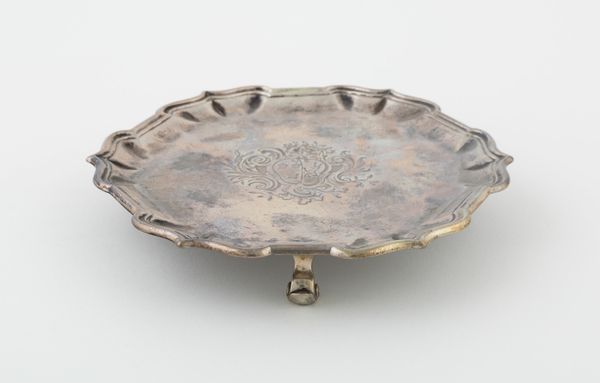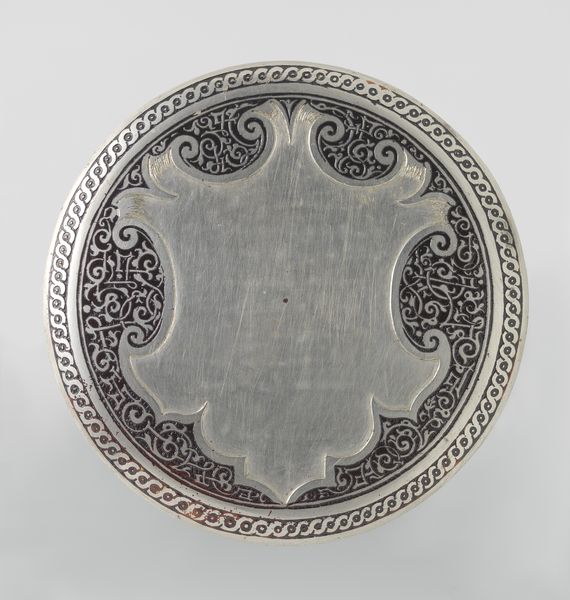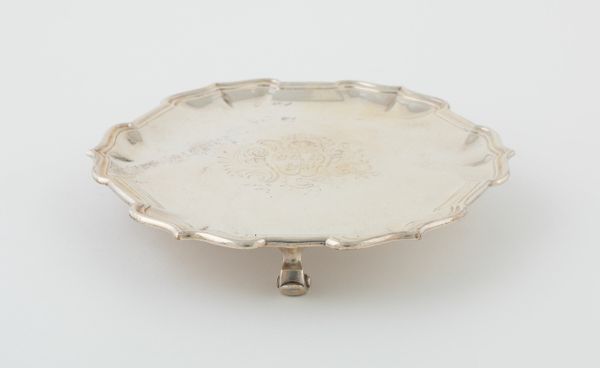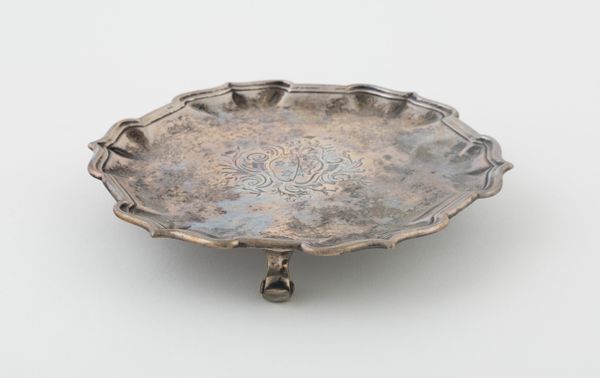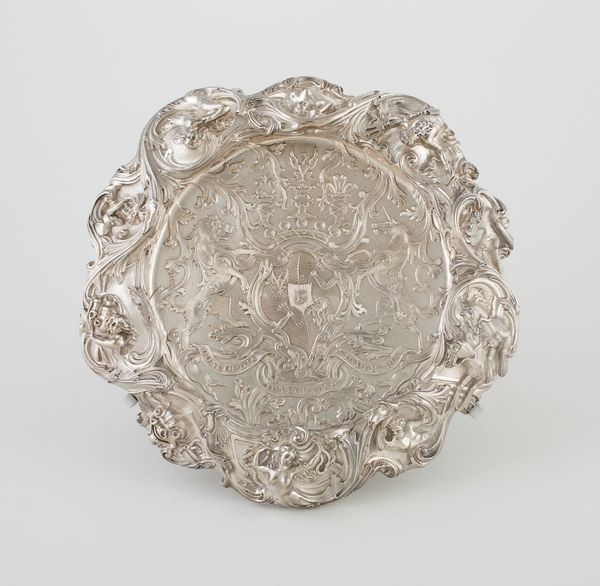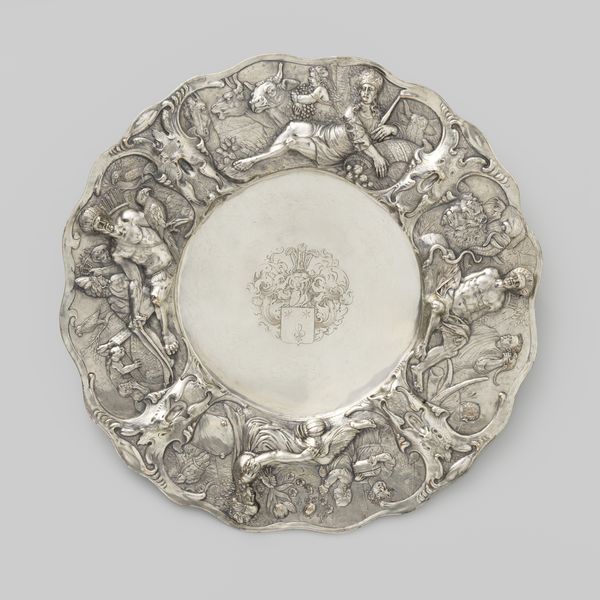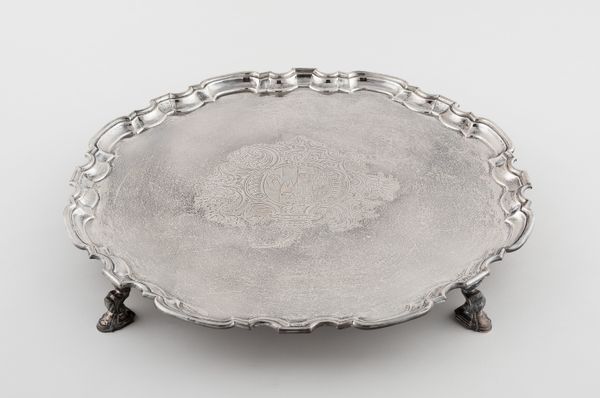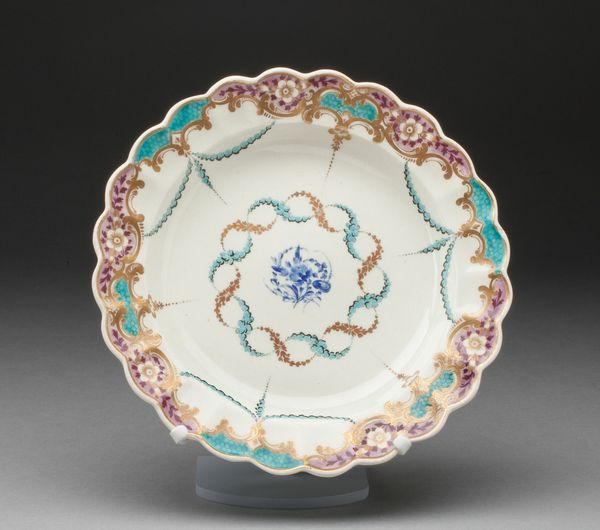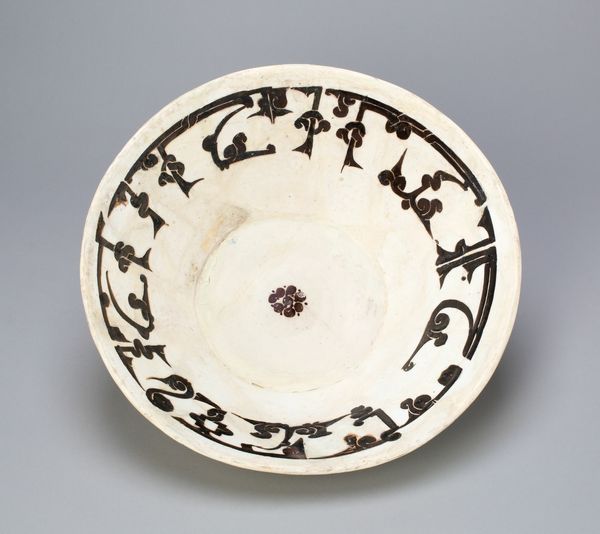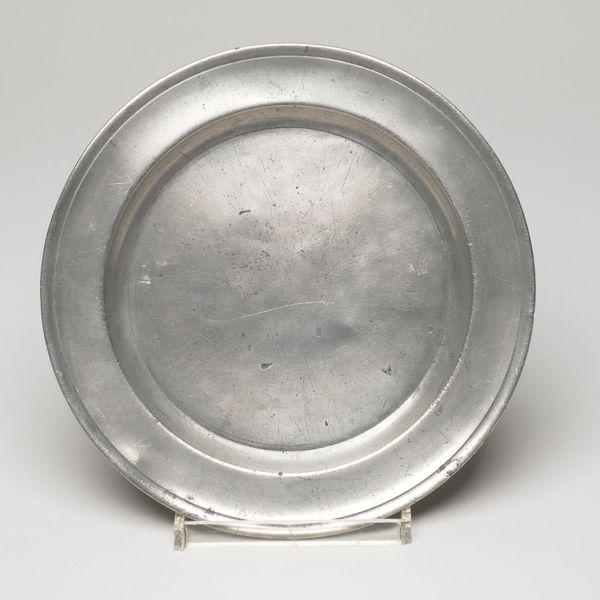
silver, metal
#
decorative element
#
silver
#
baroque
#
metal
Dimensions: 4.1 × 31.1 cm (1 5/8 × 12 1/4 in.)
Copyright: Public Domain
This salver was crafted in the early 18th century by John Tuite, a silversmith whose work reflects the elegance of the Georgian era. Notice the central cartouche, an ornamental frame enclosing a heraldic crest. Such emblems were potent symbols of lineage and social status. These symbols are not confined to the British Isles; one could trace similar emblems from medieval tapestries to ancient Roman shields, each bearing witness to a family’s story and aspiration. Consider the intertwined initials and floral embellishments of the crest. This interweaving evokes the classical motif of interwoven wreaths found in Roman art, a symbol of union and victory. This motif surfaces again and again in funerary art and marriage portraits, capturing a primal human desire to leave a lasting legacy. What unconscious desires might have driven the patron who commissioned this salver? Through careful engraving, status becomes an enduring and powerful cultural artifact, a reminder of the cyclical nature of power and prestige across generations.
Comments
No comments
Be the first to comment and join the conversation on the ultimate creative platform.
